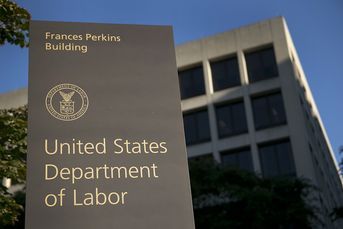Market bets based on the Super Bowl a Hail Mary pass
 Jordan Naffa of Arista Wealth Management and Sam Stovall of CFRA Research
Jordan Naffa of Arista Wealth Management and Sam Stovall of CFRA Research
The Super Bowl indicator has been right more than 70 percent of the time, but there's no causal relationship.
With Super Bowl LVIII around the corner, football fans with any interest in finance are inevitably revisiting the eponymous stock market indicator.
For the better part of 57 years, the Super Bowl indicator has correlated with stock market performance. Generally, if an American Football Conference team emerged victorious, the market was down that year, and if a National Football Conference team claimed the league title, the market was up. That has been the case more than 70 percent of the time.
But it’s also a correlation that has been fading, as market indexes have increasingly deviated from the indicator.
To be clear, as one Las Vegas-based advisor said, the Super Bowl indicator is just for fun. There’s no causal relationship between the outcome of the big game and how the market performs afterward.
“When we’re having these conversation with clients, it’s for fun and the caveat that this is not a market predictor. There’s no real connection,” said Jordan Naffa, director of financial planning at Arista Wealth Management. “Over the past 20 Super Bowls, this indicator has only been right six times.”
Those fun conversations with clients are happening at the epicenter of gambling. Arista is based in Las Vegas, where Sunday’s matchup between the Kansas City Chiefs and the San Francisco 49ers will take place at Allegiant Stadium.
This year, there is also a record amount of betting on the outcome. Data from a survey published Tuesday by the American Gaming Association show that nearly 68 million Americans expect to place wagers on the game. That’s a 35 percent increase from those betting on last year’s Super Bowl, a result of expanded legal sports betting, the association said.
Americans are projected to bet a total of $23.1 billion on the game, up from $16 billion gambled on the Super Bowl in 2023, the group stated.
One of the biggest betting outfits – DraftKings – has a location in Las Vegas, and Arista counts some of its employees as clients, Naffa said.
“While we’re in Las Vegas, we don’t necessarily advocate for betting,” he said about the issue when it comes to clients. “When clients do want to bet money, we’re circling back to their financial plan in terms of how much they can afford to lose.”
Anyone wants to bet on the wider stock market based on the results of the game should think twice, said Sam Stovall, chief investment strategist at CFRA Research. He’s well-versed on the subject – his late father Bob Stovall carried the torch for the Super Bowl indicator after its creator, Leonard Koppett, dismissed it several years after coming up with it.
“The Super Bowl indicator has correlation without causation, because there is absolutely no reason why the market should go up or down depending on who won the Super Bowl,” the younger Stovall said. “The Super Bowl theory is simply a fun thing to write about during an otherwise bleak period of the year. Its track record is no better than the stock market. It’s been correct 72% of the time.”
Jeff Hirsch, editor of the Stock Trader’s Almanac, said he finds more value in the January Barometer, a correlation discovered by his late father, Yale Hirsch in 1972. That correlation shows that the S&P 500’s performance in January predicts its performance for the year 74.4 percent of the time, since 1938, he wrote in a recent post.
As for who is likely to win on Sunday, Naffa, being close to California, is rooting for the 49ers.
That’s the team with better odds, according to an analysis by Allspring, which has predicted 14 winners of the past 19 Super Bowls. In a blog post Monday, that firm gave the 49ers a two-point advantage.
In its own analysis leading up to the game – just for kicks – S&P Global Market Intelligence noted a few historical stats.
“Over the past 57 years the median combined final score of each game has been 46 points. When the teams in the Super Bowl combine to score at least 46 points, the stock market returns 16.3 percent on average. If the final combined score is under 46, the average market return is just 7.2 percent,” the firm stated.
Additionally, when games occur west of the Mississippi River, average market returns in the following year have been 8.6 percent compared with 14.3 percent for games to the east of the Mississippi, according to the analysis.
There’s also the question of dome versus no dome.
“Allegiant Stadium is one of two of the NFL’s newest stadiums along with SoFi Stadium in Los Angeles,” S&P wrote. “Nineteen previous Super Bowls were played under a dome or with the retractable roof closed and the average market return was 8.3 percent, while 38 Super Bowl games have been played at an open-air stadium or with the retractable roof open and the average S&P 500 return for those years is 13.8 percent.”
Commission-free annuity transactions are on the rise. Here’s why
Learn more about reprints and licensing for this article.








